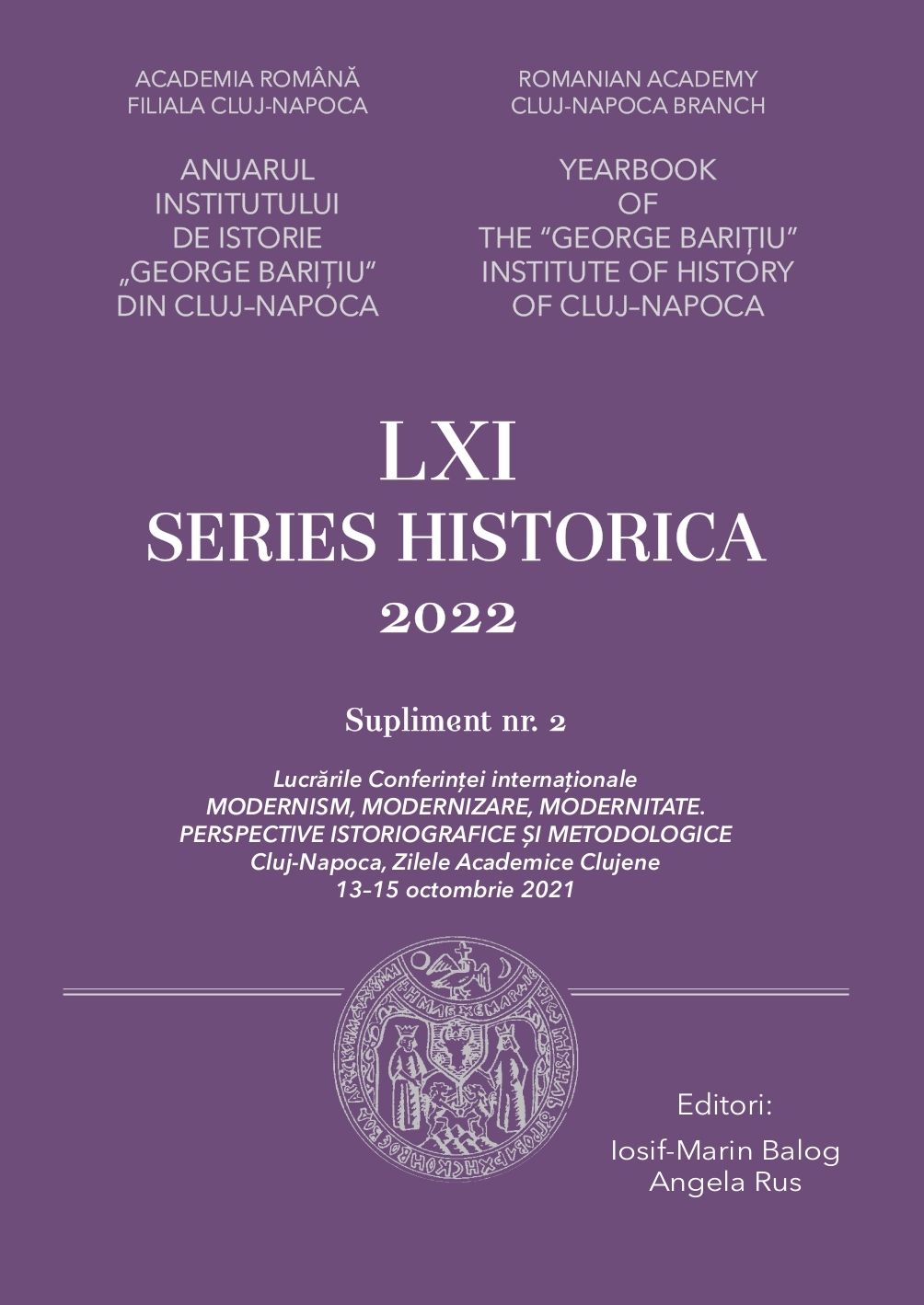Tentativele de recuperare a modernității creatoare în muzica și artele vizuale din România la mijlocul anilor '60 ai secolului trecut
Attempts to Recover Creative Modernity in Music and Visual Arts in Romania in the mid-60s of the Last Century
Author(s): Veronica TurcuşSubject(s): Cultural history, Music, Visual Arts, Post-War period (1950 - 1989), History of Communism, Film / Cinema / Cinematography, History of Art
Published by: Editura Academiei Române
Keywords: Romanian communism; controlled cultural emancipation; cinema; visual arts;
Summary/Abstract: The insertion of Soviet models in Romanian culture after the Second World War and the imposition of socialist realism as a unique method of creation from 1948 were outclassed in the mid-1960s, when an attempt was made to revalue artists and writers' modernity and creative integrity. The phenomenon is also noticeable in the evolution of Romanian cinema, which now records a revitalization of co-productions with the participation of Western directors, actors and production houses, in parallel with the affirmation of the Epic of National Film's project, which represents the national reaction and delimitation of Moscow policy in the field of culture. The Romanian documentary film comes out of the tight strap of politics and subjects pertinent to socialist realism, choosing subjects from the fine and elitist universe of the arts; the fiction film begins to deal with sometimes awkward themes in the era, the controlled opening of the second half of the seventh decade also allowing for less rigid productions, which leaves room for interpretation. The gradual overcoming of ideological conventions is observable in action, adventure, love, comedy, western, detective, thriller, SF movies. After 1965 and in the '70s, comedy films, westerns or inspired by cape and sword films were made, in accordance with the filmography of the period in the West, and the Romanian musical presented other characteristics and sources of inspiration compared to the musical art proposed in USSR and in a number of Eastern European states, referring directly to classical productions of the genre in the West. In the mid-1960s, there was an evolution of music in the sense of modern forms (at that time symbolized by the dodecaphonism of the second Viennese school). In the field of visual arts, there was an emancipation of creative models and techniques, alternative art becoming a symbol of connecting the Romanian cultural process to Western Europe.
Journal: Anuarul Institutului de Istorie »George Bariţiu« - Series HISTORICA - Supliment
- Issue Year: LXI/2022
- Issue No: 2
- Page Range: 251-270
- Page Count: 20
- Language: Romanian

